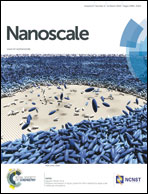Quantum phase transitions and topological proximity effects in graphene nanoribbon heterostructures
Abstract
Topological insulators are bulk insulators that possess robust chiral conducting states along their interfaces with normal insulators. A tremendous research effort has recently been devoted to topological insulator-based heterostructures, in which conventional proximity effects give rise to a series of exotic physical phenomena. Here we establish the potential existence of topological proximity effects at the interface between a topological insulator and a normal insulator, using graphene-based heterostructures as prototypical systems. Unlike conventional proximity effects in topological insulator based heterostructures, which refer to various phase transitions associated with the symmetry breaking of specific local order parameters, topological proximity effects describe the rich variety of quantum phase transitions associated with the global properties of the system measured by the location of the topological edge states. Specifically, we show that the location of the topological edge states exhibits a versatile tunability as a function of the interface orientation, the strength of the interface tunnel coupling between a topological graphene nanoribbon and a normal graphene nanoribbon, the spin–orbit coupling strength in the normal graphene nanoribbon, and the width of the system. For zigzag and bearded graphene nanoribbons, the topological edge states can be tuned to be either at the interface or outer edge of the normal ribbon. For armchair graphene nanoribbons, the potential location of the topological edge state can be further shifted to the edge of or within the normal ribbon, to the interface, or diving into the topological graphene nanoribbon. We further show that the topological phase diagram established for the prototypical graphene heterostructures can also explain the intriguing quantum phase transition reported recently in other topological-insulator heterostructures. We also discuss potential experimental realizations of the predicted topological proximity effects, which may pave the way for integrating the salient functionality of topological insulators and graphene in future device applications.


 Please wait while we load your content...
Please wait while we load your content...